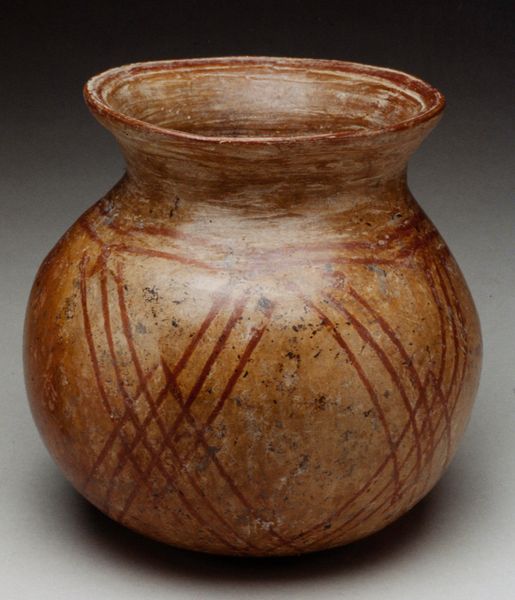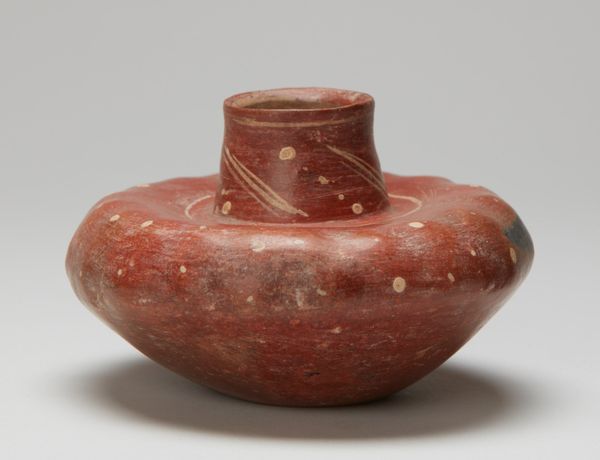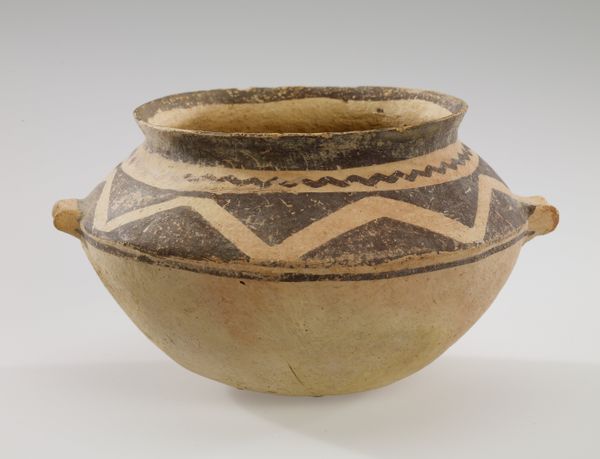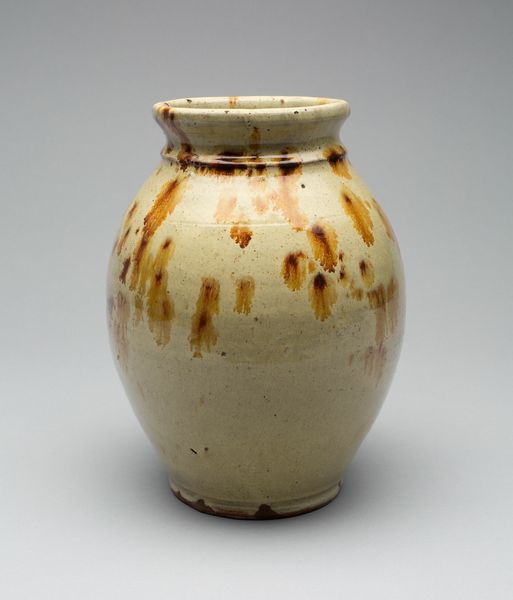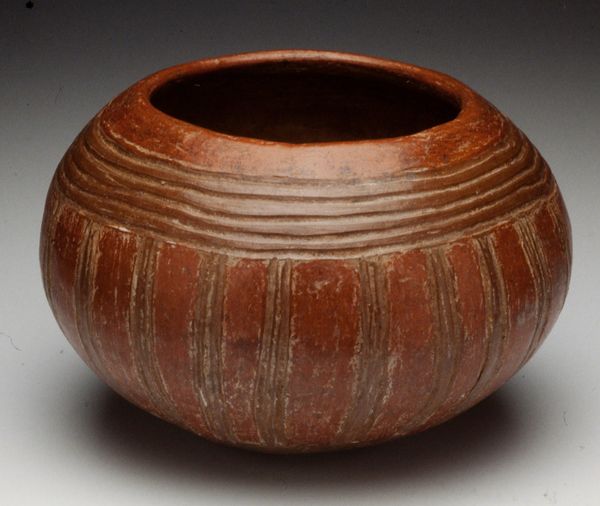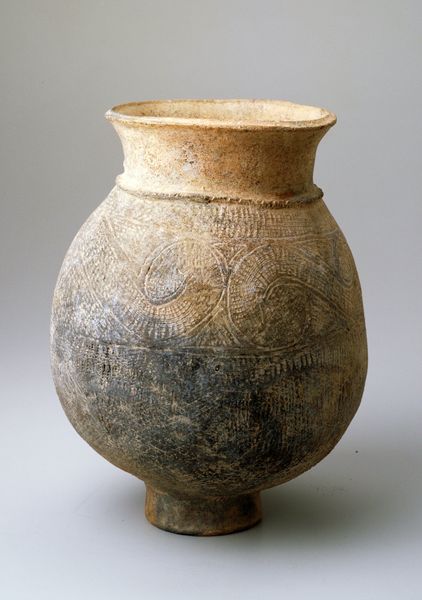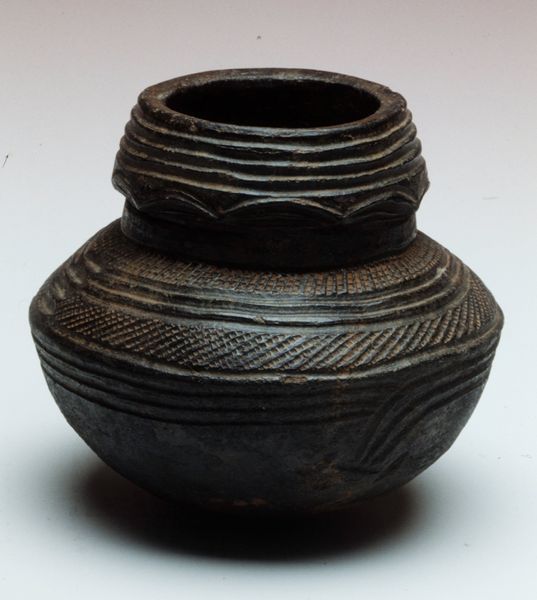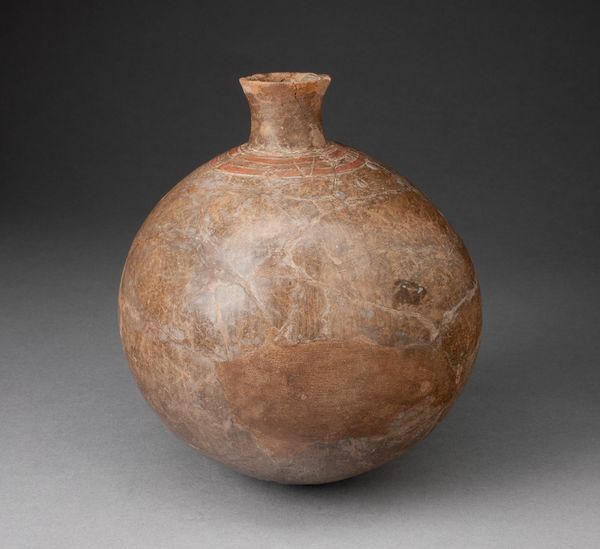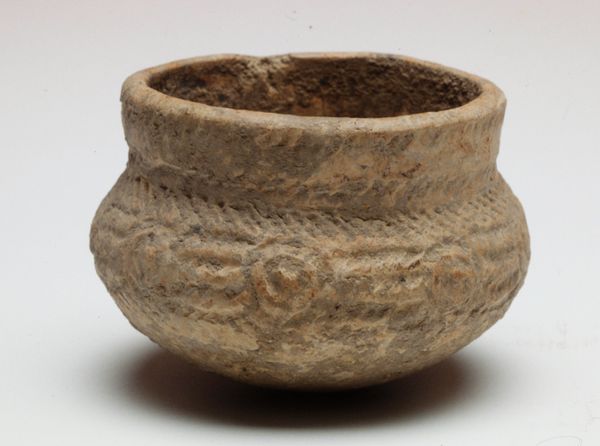
ceramic, earthenware
#
ceramic
#
earthenware
#
indigenous-americas
Dimensions: 4 x 4 in. (10.2 x 10.2 cm)
Copyright: Public Domain
Curator: Hello! Editor: We’re looking at a ceramic, earthenware globular bowl created by the Michoacan people sometime between 201 and 700 AD. It’s quite small, almost humble in its presentation. What significance do you see in a piece like this? Curator: This bowl is a powerful example of the indigenous Americas' resistance against erasure, even through something that may appear purely functional. We have to ask, what was its purpose, beyond the immediately utilitarian? Editor: Possibly ceremonial? Curator: Precisely. Consider the social hierarchy of the time. Who had access to create or commission such objects? The geometric designs might be symbolic, representative of cultural values or spiritual beliefs. What kind of cultural narratives were encoded in these everyday objects? Editor: It’s fascinating to think about the layers of meaning embedded in what appears simple. I didn't consider the resistance aspect initially. Curator: Colonial narratives often diminish the complexity and sophistication of Indigenous art and culture, portraying them as primitive. By examining the historical and social context, and challenging that perspective, we recognize agency. This piece becomes an artifact of resistance and a testament to cultural resilience. What stories does this bowl whisper about Michoacan society? Editor: It challenges our assumptions. I thought it was just a pot. Now, I realize it’s a vessel holding stories of resilience, culture, and perhaps, quiet defiance. Curator: Exactly! This humble bowl reflects not only functionality and beautiful geometric form, but holds the social fabric of the ancient Michoacan.
Comments
No comments
Be the first to comment and join the conversation on the ultimate creative platform.

